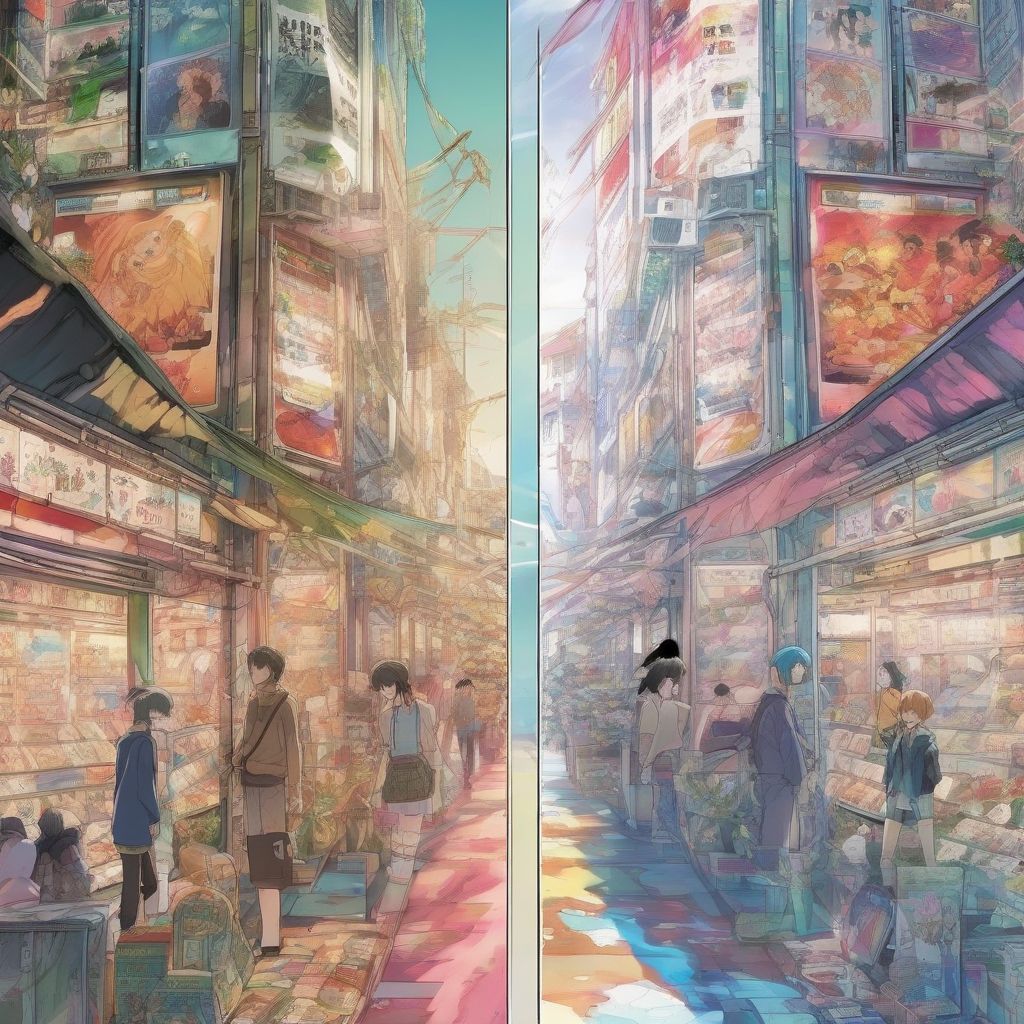Imagine stepping into a world where your favorite manga bursts into vibrant life, complete with dazzling animation, epic soundtracks, and the voices you’ve always imagined for your beloved characters. That’s the magic of anime adaptations. But as any seasoned anime enthusiast will tell you, not all adaptations are created equal. Some soar to legendary status, capturing the heart and soul of their source material, while others… well, let’s just say they might leave you wondering if you were reading the same story.
So, how can you navigate this landscape of shimmering animation and heart-wrenching drama to discern the gems from the duds? Fear not, fellow anime aficionado! This guide will equip you with the tools to become a discerning connoisseur of anime adaptations, able to dissect, analyze, and ultimately, appreciate the artistry and complexities involved in bringing manga to the screen.
Delving into the Source: The Manga
Before we even hit “play” on that first episode, it’s crucial to understand the foundation upon which an adaptation is built: the manga.
Story and Characters: The Heart of the Matter
First and foremost, immerse yourself in the manga’s narrative and characters. What are the overarching themes, the intricate plot points, and the defining character arcs? Understanding the core elements of the story will allow you to gauge how faithfully and effectively they are translated into the anime adaptation.
Art Style and Paneling: A Visual Language
Manga is a visual medium, and its art style plays a crucial role in storytelling. Pay attention to the artist’s use of paneling, composition, and details to convey emotion, action, and atmosphere. These visual cues often serve as inspiration for the anime’s animation style and overall aesthetic.
The Anime Adaptation: A New Interpretation
With a solid grasp of the manga, you’re ready to dive into the anime adaptation. But remember, an adaptation is not a carbon copy; it’s an interpretation.
Animation and Art Style: From Page to Screen
How does the anime’s animation style reflect or deviate from the manga’s original art? Does it enhance the story’s emotional impact or create a jarring disconnect? Consider the use of color palettes, character designs, and animation techniques. Do they capture the essence of the manga?
Music and Sound Design: Setting the Mood
Music and sound design are integral to the anime experience. Analyze how the soundtrack complements or contrasts with the on-screen action. Do the sound effects enhance the impact of fight scenes or heighten the emotional resonance of quieter moments?
Voice Acting: Bringing Characters to Life
Voice acting breathes life into anime characters. Pay attention to how the voice actors embody the personalities and emotions of the characters you came to know in the manga. Do their performances add depth and nuance, or do they fall flat?
Comparing and Contrasting: A Critical Eye
Now comes the fun part: comparing and contrasting. Armed with your knowledge of both the manga and the anime, you can start to analyze the adaptation’s strengths and weaknesses.
Fidelity to the Source Material: Staying True to the Story
How closely does the anime follow the manga’s plot? Are there any significant deviations, additions, or omissions? While some changes might streamline the story for television, others might alter crucial plot points or character motivations.
Pacing and Adaptation Choices: A Delicate Balance
Anime adaptations often face the challenge of condensing lengthy manga arcs into shorter episode formats. Analyze how the pacing affects the story’s flow. Are certain arcs rushed or drawn out? Do any creative choices made for the adaptation enhance or detract from the overall narrative?
Character Development and Relationships: Staying True to the Characters
Characters are the heart of any story. How well does the anime capture the complexities and nuances of the characters’ relationships and motivations? Are there any significant changes in their personalities or backstories?
The Verdict: Appreciation and Critical Analysis
Ultimately, comparing and contrasting anime adaptations is a subjective experience. What one viewer perceives as a flaw, another might see as an interesting interpretation. There’s no right or wrong answer, but by engaging in critical analysis, you can deepen your appreciation for both mediums.
Enjoy the Journey
Remember, the most important thing is to enjoy the journey. Embrace the excitement of seeing your favorite stories come to life, and don’t be afraid to delve into the nuances and complexities that make anime adaptations such a unique and captivating art form.
 Anime Adaptations
Anime Adaptations
[amazon bestseller=”manga”]
Your Turn to Explore
Now that you’re equipped with the knowledge to compare and contrast anime adaptations, it’s time to put your skills to the test. What are your favorite manga series? Have they been adapted into anime? Share your thoughts and insights in the comments below!
